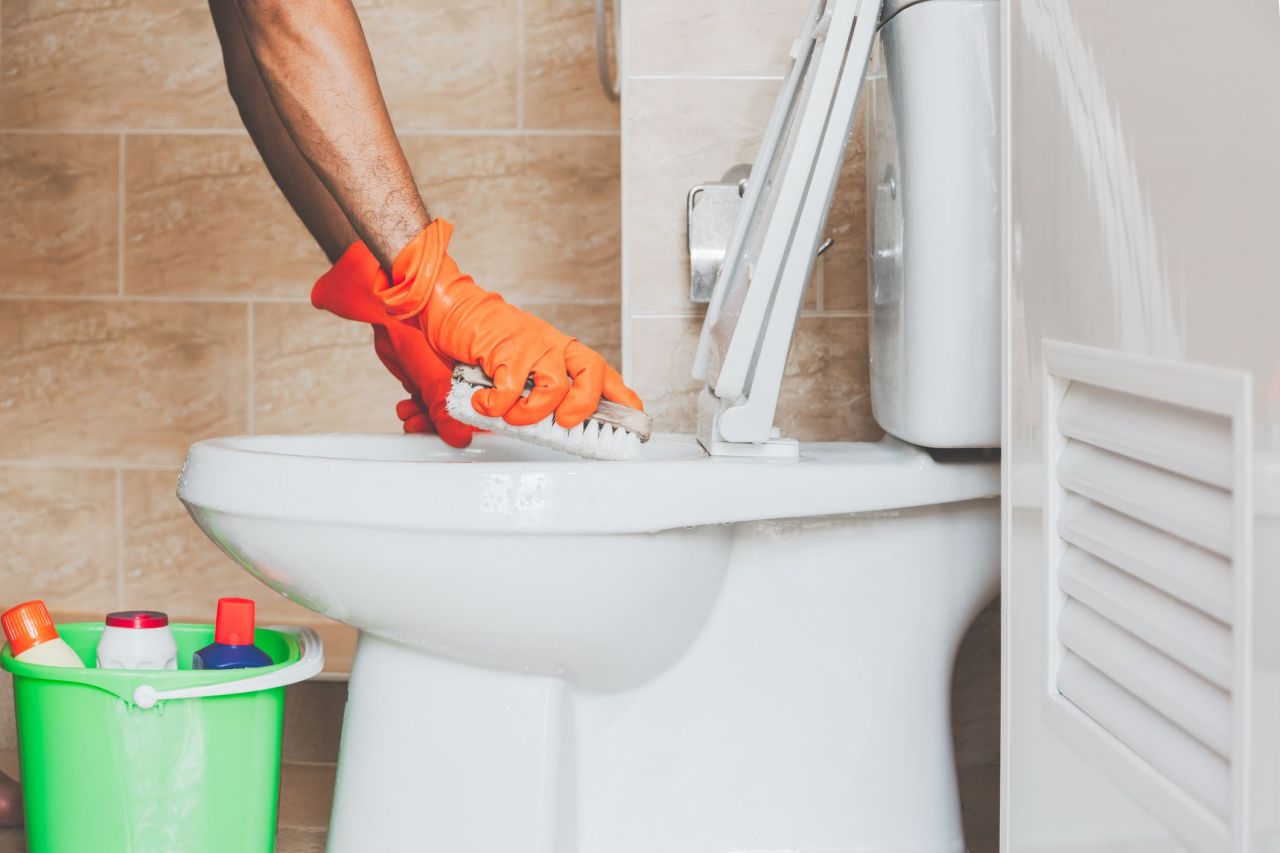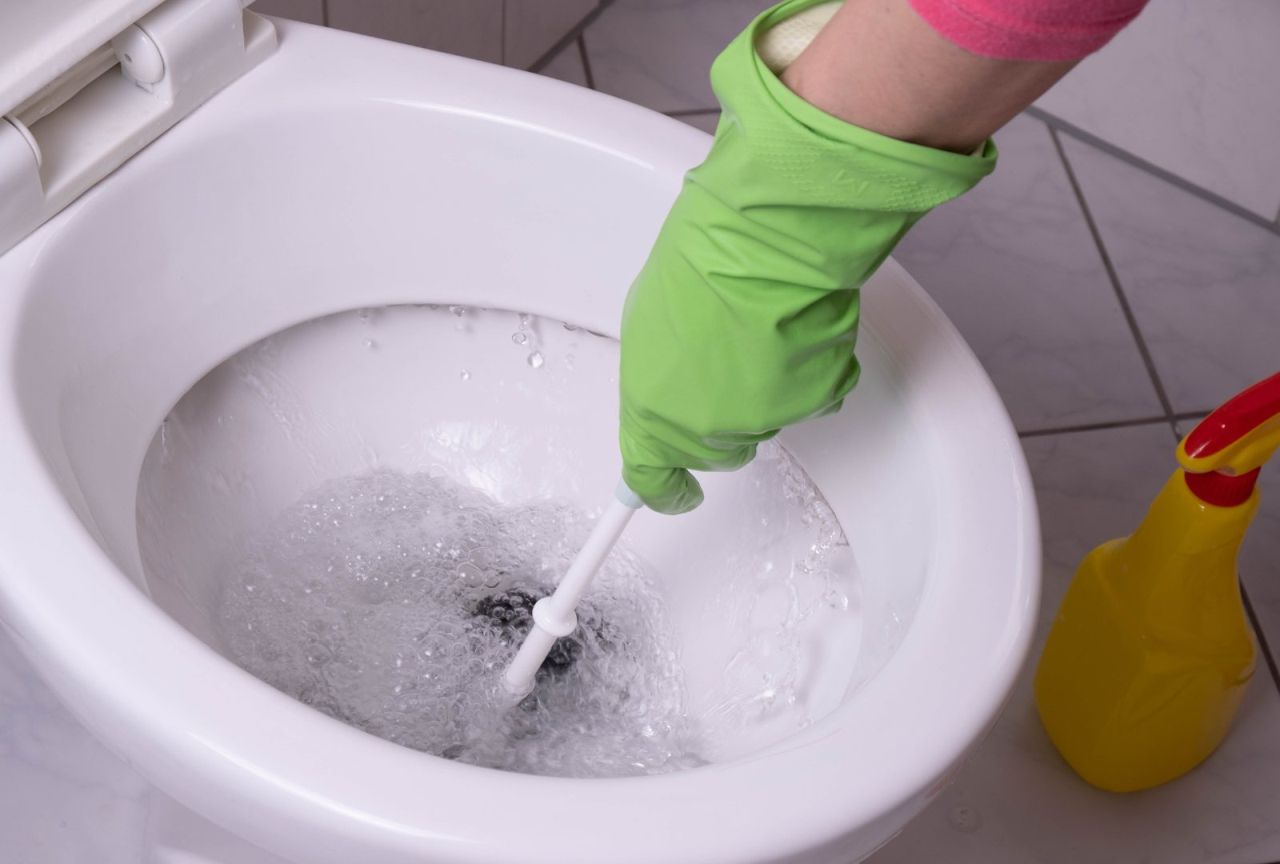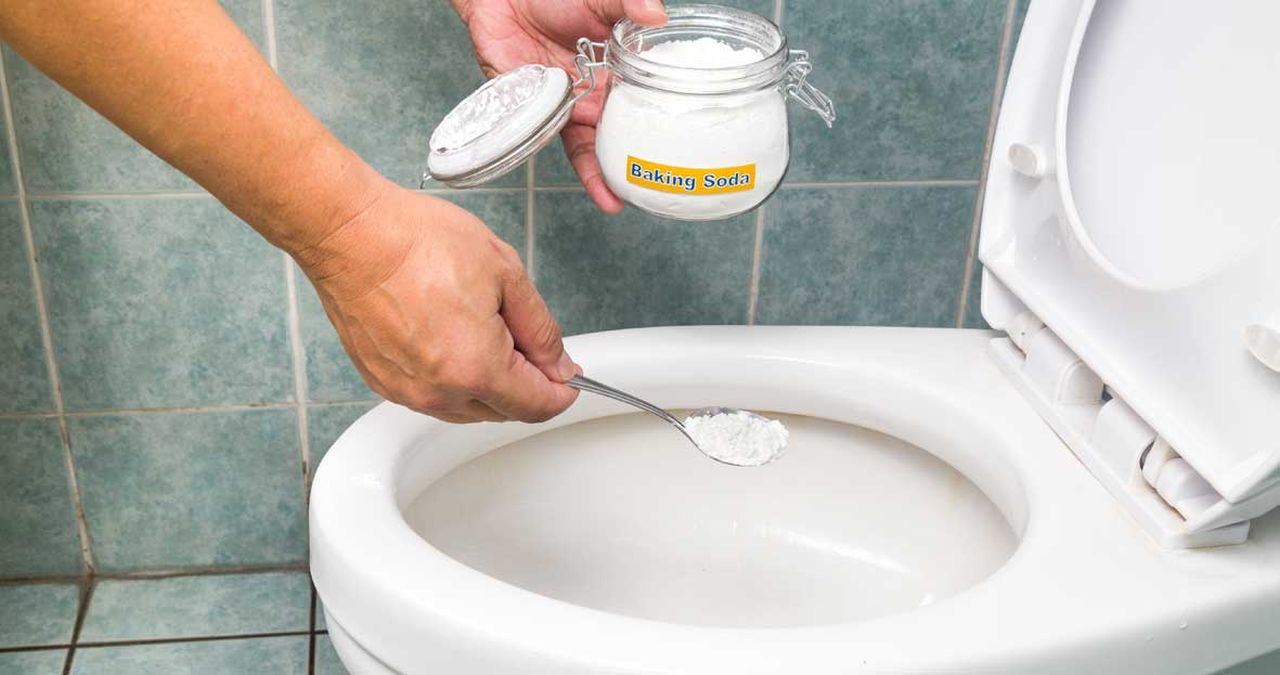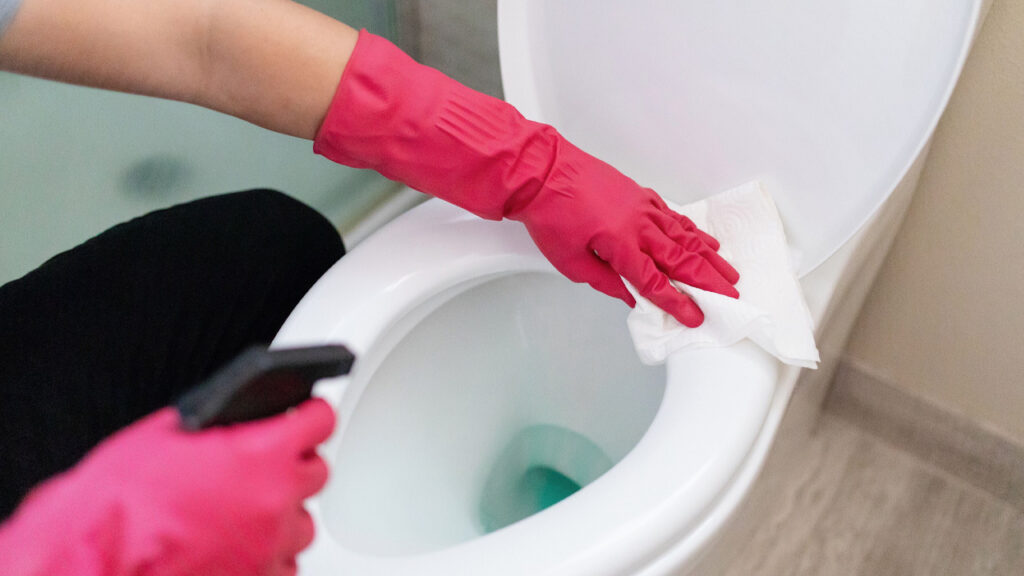Toilet stains are the most unappealing sight that can instantly ruin the mood, and they bring germs. No matter how diligently and dedicatedly you clean the toilet, there is one reason it is a daunting task: hard water. After going through all the extremes, if your toilet still looks dirty and you wonder how to remove stubborn toilet stains, know that calcium, magnesium, lime, and iron that flow into your home’s water system are the culprits. If your home has hard water, the minerals can build up quickly and be difficult to remove from surfaces such as the toilet.
We all know what thrives in an unhygienic and dirty toilet, from bacteria, dirt, and germs, to bad odor and more. It is why your toilet needs regular cleaning. If you are tired of those ugly and stubborn stains in your toilet bowl and you don’t know how to get rid of them, then you are at the right place. This comprehensive guide on how to clean toilet stains with helpful tips will allow you to banish toilet bowl stains for good.

Types of Stains
There are many types of toilet stains, and various substances are the cause. These stains can make your toilet look unpleasant and give a bad impression to your visitors. So, it is important to remove them as quickly as possible before they create an even bigger problem. But first, let’s learn about the types of toilet stains and what causes them.
Hard Water Stains
These types of stains are usually brown or yellow and are located inside the bowl. The reason is the buildup of minerals in hard water, such as magnesium and calcium. These minerals are reactive to porcelain and can cause buildup. You can use cleaning products specifically made for hard water with a toilet brush to remove such stains.
Rust Stains
Rust stains are red or orange, and you will find them covering the outer area of your toilet. These types of stains occur when iron in water reacts with the porcelain. They can give you a hard time when it comes to removing them and require a special type of cleaner.

Dye Stains
If you see something blue or green outside your toilet, that is dye stains for you. They occur when you clean the toilet with dye cleaning products, such as bowl cleaner, and they react with the porcelain. Like rust stains, cleaning dye stains can be as hard and requires a special type of toilet cleaner. However, you can try removing them with a toilet brush, combining it with dye remover and cleaning solution.
Organic Stains
Organic stains are caused by waste buildup, such as feces and urine. When these accumulation reacts with the porcelain, organic stains are formed in colors black and brown.
Copper Stains
Copper stains are greenish-blue in color. Corrosion in copper pipes or fittings within your toilet plumbing system can cause them.
Mineral Stains
As aforementioned, hard water is rich in minerals, such as calcium, iron, magnesium, and manganese. These minerals can leave behind tenacious stains that can be hard to remove. These stains stick to your toilet bowl and create unsightly rings and lines.
Now that you have a better understanding of the types of stains that can plague your toilet, it’s time to know how to remove them and keep your toilet spotless and sanitary. Here is your ultimate guide on how to remove toilet stains, what materials and ingredients you need, and all the necessary tips.
Note: Avoid relying on harsh chemicals as they can damage the toilet. So, be careful before you start cleaning.
Material Needed:
- Baking soda
- Vinegar
- Borax
- Scrub with a toilet brush
- Pumice stone
- Hydrogen peroxide
- Protective gloves
- Cleaning brushes with stiff bristles
- Bleach
- Disinfecting wipes
Methods to Remove Toilet Stains
Baking Soda and Vinegar
For this method, all you need is baking soda and white vinegar. This combination is best for mineral and hard water stains. When you mix vinegar with baking soda, it causes a bubbling action, which helps dissolve mineral buildup and leave your toilet cleaner. Pour about a cup of baking soda into the toilet bowl and spray it with a cup of vinegar. Let it sit for 10 to 15 minutes, then take your sturdy toilet brush and scrub those stains away. After you are satisfied with the scrubbing, flush the toilet to reveal a cleaner bowl.

Hydrogen Peroxide
If you have ever wondered how to remove rust stains from a toilet bowl, use hydrogen peroxide. Why? Because hydrogen peroxide is a potent oxidizer. It is perfect to break down and remove those nasty rust stains. Start by pouring half a cup into the toilet bowl, then let it sit for 20 to 30 minutes. Next, start scrubbing the toilet with a brush. For the last step, flush away the filth and enjoy a sparkling, stainless toilet.
Lemon Juice
Lemon juice is effective for copper stains. Lemon is acidic, which can break down copper stains easily, leaving the toilet bowl gleaming. All you need to do is squeeze the juice of one lemon into the toilet bowl. However, if you are using bottled lemon juice, you can take the liberty of pouring about half a cup. Let the lemon juice sit for 30 to 60 minutes. Then, grab your toilet brush and give the bowl a good scrub, focusing on the stains. Now, flush away the lemony residue and enjoy a clean toilet.
Borax
Borax powder is a versatile cleaner, natural fungicide, and effective in removing mold stains. All you need to do is scatter a generous amount of borax powder into the toilet bowl. Take your toilet brush, spread it around stained areas, covering them all. Once you are done, you need to let it sit overnight for full effectiveness and then give it a thorough scrub with your toilet brush the next morning. Flush away the remaining residue and reveal a clean and sanitary throne.
Pumice Stone
Mineral stains got nothing on this versatile pumice stone. First, wet the stone and tenderly rub it against the stained area. Keep rubbing until the stains come out. Then, flush the remaining residue away. It is also good for removing organic stains. Though versatile, a pumice stone, if not handled with care, can damage the porcelain surface. While it excels at what it does, it has its downsides. If not cleaned and dried properly after every use, a pumice stone can harbor bacteria, increasing the chance of infection.
Cleaning Beyond the Bowl
When you are done cleaning the toilet bowl, you mustn’t forget about the toilet tank, toilet lid, and other areas with the potential of getting as dirty as the toilet bowl. To efficiently clean other areas, you can use disinfectant spray or wipe to fully disinfect the toilet.
Dos and Don’ts of Cleaning Toilet Bowl Stains
There are certain dos and don’ts that must be followed while cleaning the toilet. They can help you achieve better and satisfactory cleaning results without harming the toilet or yourself.
Dos
- Before you start cleaning the toilet, make sure you are using protective gear like gloves and a mask to prevent direct contact with bacteria and chemicals
- Before you go on a cleaning spree, it’s important to choose the right cleaning products, specially made for cleaning toilets
- It is recommended to use hot water while cleaning the toilet as it can loosen and dissolve any buildup in the toilet bowl. You can combine hot water with your cleaning products to get the best results
- After every cleaning session, make sure the room is well-ventilated to avoid inhaling hazardous chemicals and fumes. Let the toilet air dry
- You must be careful while using the plunger, as it can splash the cleaning solution onto your skin
Don’ts
- You must avoid using any coarse cleaners, bleach, which can get trapped at the bottom of the toilet and cause the porcelain to break
- When it comes to cleaning products, you should avoid mixing them. Because when you do so, it can expose you to various destructive chemicals that can cause health issues
- When you have meticulously cleaned the toilet bowl, don’t neglect the tank. It can be a thriving space for many microbes and bacteria
- Don’t ever leave the cleaning products in the bowl for too long. Leaving them for an extended period can cause damage to the porcelain. The toilet parts, including gaskets and seals, which are made from rubber and plastic, can worsen the toilet bowl, causing it to leak
- Don’t forget to clean the floor around the toilet, which can harbor germs, grime, and dirt
- Don’t ever flush the cleaning wipes, it’s a big no. The cleaning wipes don’t break down like toilet paper and may cause sewer and septic issues, as well as damage the plumbing and cause blockage
How Often to Clean Toilet Bowl Stains
Cleaning the toilet may not be the most pleasant task, but it is required to maintain basic hygiene and cleanliness of your bathroom. Besides, cleaning the toilet also helps increase the lifespan of your toilet. However, it doesn’t mean that you should clean the toilet every day; giving the toilet bowl a thorough cleaning once a week is more than enough.
This comprehensive guide answers how to clean toilet stains, and the dos and don’ts of the process that will help you achieve the best results possible. So, next time, if you are faced with pesky stains, don’t be intimidated; with the right tools, ingredients, methods, and comprehensive toilet cleaning tips, the task becomes effortless.
Follow Homecrux on Google News!




